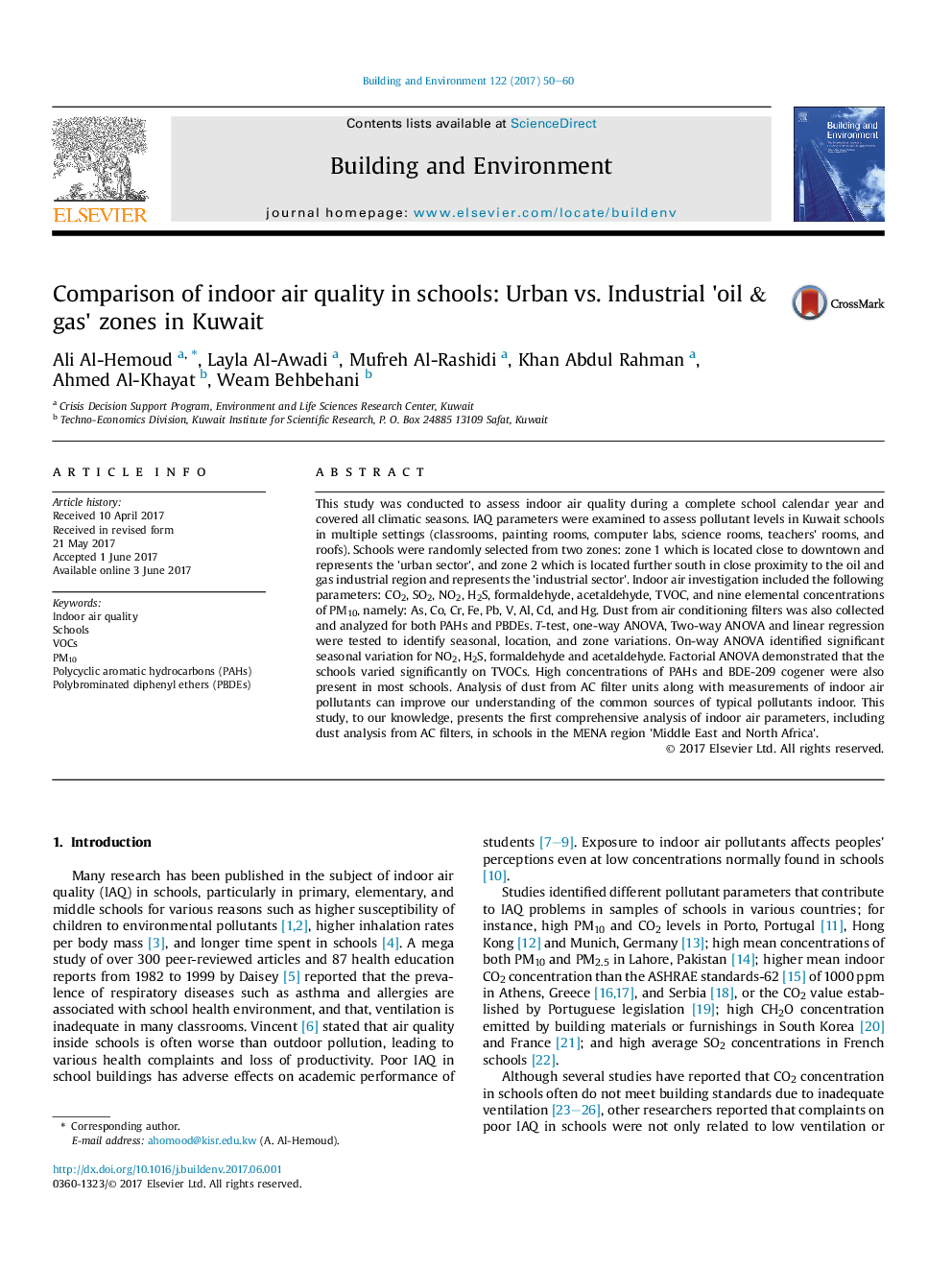| Article ID | Journal | Published Year | Pages | File Type |
|---|---|---|---|---|
| 4911446 | Building and Environment | 2017 | 11 Pages |
Abstract
This study was conducted to assess indoor air quality during a complete school calendar year and covered all climatic seasons. IAQ parameters were examined to assess pollutant levels in Kuwait schools in multiple settings (classrooms, painting rooms, computer labs, science rooms, teachers' rooms, and roofs). Schools were randomly selected from two zones: zone 1 which is located close to downtown and represents the 'urban sector', and zone 2 which is located further south in close proximity to the oil and gas industrial region and represents the 'industrial sector'. Indoor air investigation included the following parameters: CO2, SO2, NO2, H2S, formaldehyde, acetaldehyde, TVOC, and nine elemental concentrations of PM10, namely: As, Co, Cr, Fe, Pb, V, Al, Cd, and Hg. Dust from air conditioning filters was also collected and analyzed for both PAHs and PBDEs. T-test, one-way ANOVA, Two-way ANOVA and linear regression were tested to identify seasonal, location, and zone variations. On-way ANOVA identified significant seasonal variation for NO2, H2S, formaldehyde and acetaldehyde. Factorial ANOVA demonstrated that the schools varied significantly on TVOCs. High concentrations of PAHs and BDE-209 cogener were also present in most schools. Analysis of dust from AC filter units along with measurements of indoor air pollutants can improve our understanding of the common sources of typical pollutants indoor. This study, to our knowledge, presents the first comprehensive analysis of indoor air parameters, including dust analysis from AC filters, in schools in the MENA region 'Middle East and North Africa'.
Keywords
Related Topics
Physical Sciences and Engineering
Energy
Renewable Energy, Sustainability and the Environment
Authors
Ali Al-Hemoud, Layla Al-Awadi, Mufreh Al-Rashidi, Khan Abdul Rahman, Ahmed Al-Khayat, Weam Behbehani,
